How to deep clean your fridge
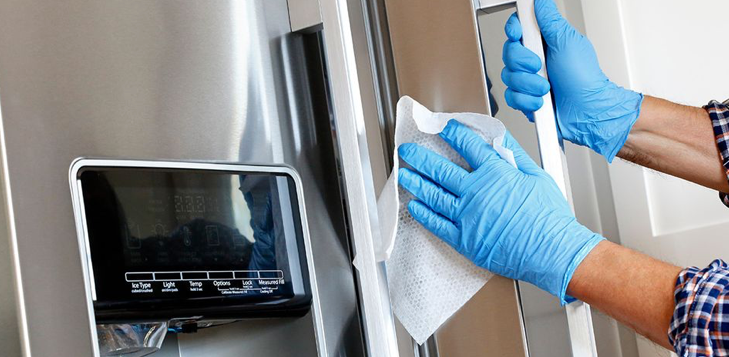
Is your fridge dirty or smelly? Follow these simple steps to keep yours clean, stop it smelling and protect your food from harmful bacteria.
From milk spills and cake crumbs to forgotten fruit at the bottom of the crisper drawer, fridges can soon start to look messy and smell funny. But with a little care and attention, the hardest working appliance in your kitchen can look like new again.
Cleaning little and often is your best bet for preventing unpleasant smells and stopping bacteria from breeding, but it's still important to set aside some time to do a deep-clean every now and then. Read on to find answers to the key questions about how to properly clean a fridge.
How should I clean my fridge's interior?
Follow this simple step-by-step guide for a clean and hygienic fridge interior.
1. Empty it
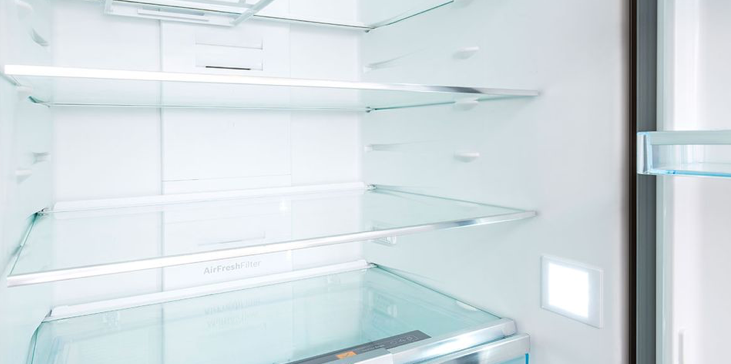
Empty the fridge of food. Take the opportunity to audit whatever you have. Out-of-date items and a questionable-smelling pack of cold cuts? Put them in your food waste.
Put perishable items into cool bags. The cleaning process shouldn't take ages, but bacteria can quickly multiply at room temperature so don’t risk leaving them out on the kitchen counter while you work.
2. Remove the shelves and drawers
Remove interior shelving, drawers and door racks as much as you can before you start cleaning them. Don’t stand at an open door trying to clean them in situ.
Wash the removable parts. The shelving, drawers and door racks can be washed in the sink with washing-up liquid and hot water but let glass shelves warm up to room temperature before washing them or you'll risk them cracking from the heat.
Don't put the drawers or door racks in the dishwasher unless you know for sure they're dishwasher-proof. In a hot wash, some plastic items can warp, and if that happens you're likely to have problems getting them back inside the fridge.
Rinse everything off and leave it all to air dry on the draining board if you can. Alternatively, use a fresh cloth to dry the parts off and store them out of the way until you're ready to put them back in the fridge. This will help reduce the likelihood of immediately reintroducing bacteria back into the fridge.
3. Choose your detergent
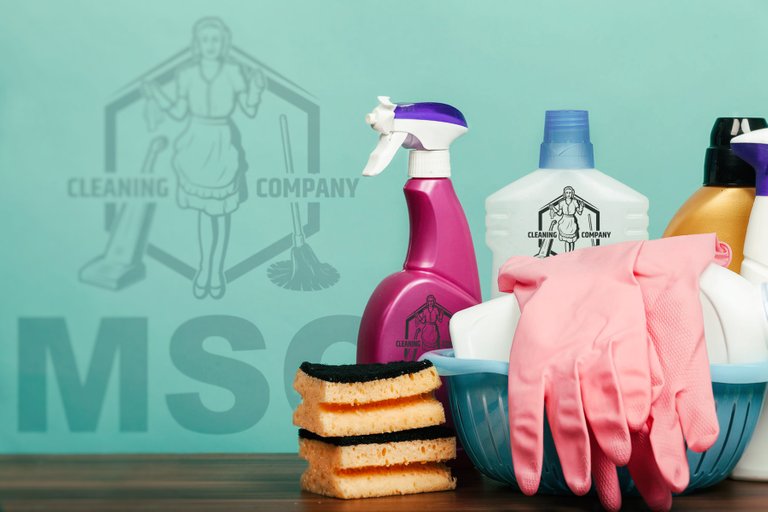
Use lukewarm soapy water to clean the fridge's interior surfaces. If you prefer a more natural cleaning solution, consider a vinegar spray (water with white vinegar) or a paste mix of bicarbonate of soda and water.
Avoid using harsh detergent sprays inside your fridge as the strong odour can linger and transfer to your food.
4. Wipe the inside, from top to bottom
Start your cleaning at the top. That way you won't have to worry about drips coming down on areas you've already cleaned.
Clean the shelf ledges, the walls, and the condensation trough - that's the narrow gulley on the back wall that runs down towards the drip pipe.
Finally, clean the base of the fridge where all the drips and crumbs tend to accumulate.
Dry everything off properly with paper towels or a clean dish cloth. You don't want any excess moisture in your fridge when you're done.
If after thoroughly cleaning the inside of the fridge there's still an unpleasant smell, the culprit might be out of sight.
A build-up of food and grime in the drainage pipe at the back of the fridge might be the source of the problem. Or it could be further down behind the fridge in the drip tray where the condensation from your fridge ends up. The water that's drained from the fridge can bring with it bits of food and other gunk. If that collects in the drip tray and is left undealt with, it can start to go rancid and give off a foul smell.
A good clean of one or both of these should solve the issue.
1. Clean the fridge's drip tray
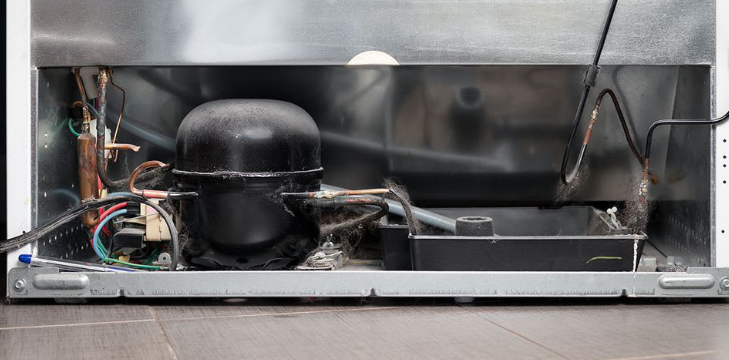
Locate the drip tray. The drip tray is where the water that runs down the drainage hole in your fridge collects. Once there, the heat from the compressor helps it to evaporate. The drip tray can usually be found at the bottom of the back of the fridge.
Wipe it out with a wet cloth or kitchen roll. This might do the job, but in some cases, you may need to remove the drip tray completely. Check the user manual for your appliance before attempting this and make sure you switch it off at the wall first. Once removed, simply wash the drip tray with soapy water before replacing it.
2. Unblock the fridge's drain pipe
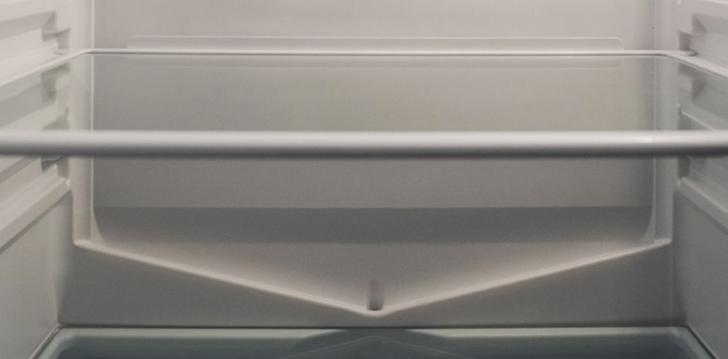
If water is pooling at the bottom of your fridge, there’s likely a blockage in the drain pipe that runs from the back wall of the fridge down to the drip tray outside at the back of the fridge. Crumbs and other residue can gather in the pipe, preventing water from running down.
There are two ways to deal with a blockage:
Remove it using a cotton bud, pipe cleaner or specialist tool. If the blockage is close to the top of the pipe, it will be a lot easier to deal with. Working around inside with a cotton bud, a pipe cleaner or the specialist tool that may have come with your fridge, can sometimes do the trick. Wipe off any gunk you manage to scoop out with a tissue or paper towel.
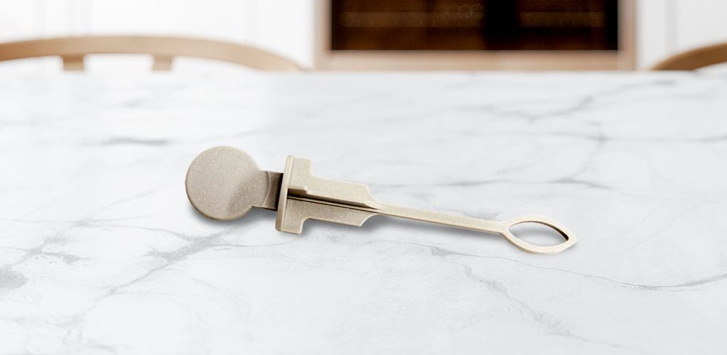
Remove it by irrigating the pipe using a syringe and hose attachment. A few flushes of water will hopefully shift whatever's causing the blockage
Thank you for taking the time to look at our profile and post we look forward to posting lots of content for you guys to view in the future from myself Simon and my partner Melissa hence the MS Logo design and company name .
WE CLEAN
PUBS
BARS
RESTRAUNTS
CLUBS
HOUSES
OFFICES
FLATS
HOTELS
B&B
SHOPS
AND ANY KIND OF COMPANY THAT NEEDS A CLEANING SERVICES.
FEEL FREE TO CONTACT US VIA OUR EMAIL OR FOLLOW AND DM US ON OUR SOCIAL MEDIA SHOWN UNDER THIS SECTION.


YOU CAN FIND OUR SOCIAL MEDIA LINKS
We have set up a Facebook page ⚜️
https://www.facebook.com/profile.php?id=100084926149710
We also have a instagram page ⚜️
https://www.instagram.com/msccleaningservices/



